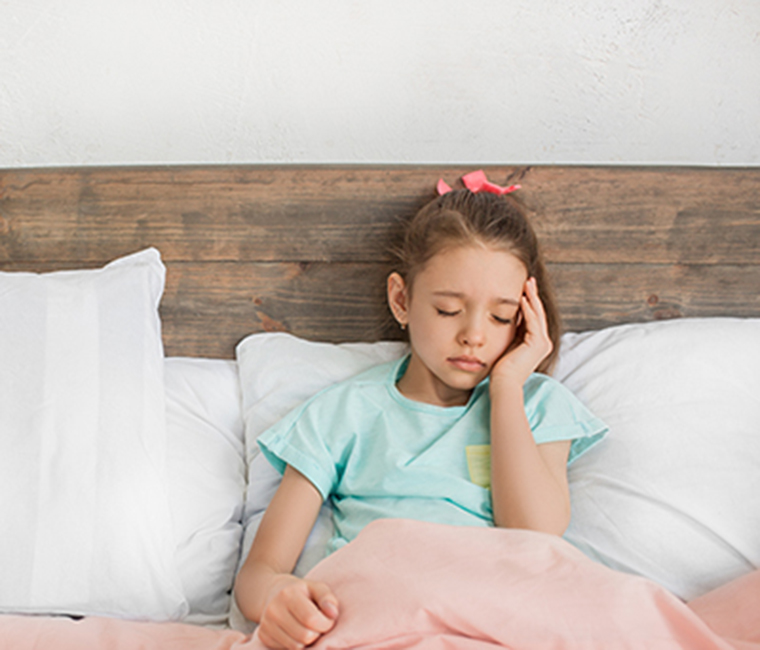You didn’t realize it at the time, but your daughter had her first migraine at school when she was nine years old. The school nurse sent her home because she was feeling bad. She slept the rest of the day and when she woke up she was fine. You thought it was just a tension headache, because children don’t get migraines, do they?
It was a year later, at age 10, when she had her second headache that wiped her out. She is now 11 years old and her headaches have gradually increased in frequency from every six weeks to once a week … these are much more than tension headaches — it is time to see a pediatric neurologist.
Washington University pediatric neurologist, David Callahan, MD, treats children who suffer from migraine headaches. He explains, “The first step is to obtain a history from the child and parent, and perform a neurologic examination in order to make an accurate diagnosis. Once the diagnosis is confirmed, we can provide a treatment plan for the migraines.
An important aspect of treatment involves identifying and avoiding potential headache and migraine triggers. Maintaining a regular sleep schedule, regular meals and good nutrition, and drinking plenty of water are especially important. Some potential triggers for migraines are not easily managed or controlled, such as changes in weather and barometric pressure. There are also many potential dietary triggers for migraine. Many patients experience migraine after a stressful day or event.”
A migraine is a moderate or severe headache pain that disrupts activity, with a specific location (unlike adult migraines, the pain in pediatric migraine is most commonly bilateral, or occurring on both sides of the head at the same time).
Other symptoms include:
- Stomachache, nausea or vomiting
- Dizziness and movement sensitivity
- Light and/or noise sensitivities
- A change in mood or behavior, or prodrome (pre-migraine symptoms), may occur hours or days before the headache
Migraines can also involve neurological symptoms, or aura (flashing lights, zigzag lines, temporary loss of vision, or numbness and weakness of face or extremity) for 5-30 minutes at onset of attack.
As the headache resolves, your child may notice fatigue, irritability, and trouble concentrating.
Dr. Callahan adds, “Effective treatment strategies can be different for different patients. Having your child lie down in a quiet, dark room during a migraine, and using an icepack or cold compress can help control the symptoms of the migraine.
A combination of the right medication (over-the-counter or prescription pain relievers, and medication for nausea), lifestyle modifications and relaxation techniques, and use of vitamin supplements or prescription medication for migraine prevention, can help the child immensely with managing migraines to minimize disruption of his or her school and extracurricular activities.”
Dr. Callahan sees patients at:
St. Louis Children’s Specialty Care Center
13001 North Outer 40 Road, Suite 1A
Town and Country, MO 63017
Please ask your pediatrician for a referral to Dr. Callahan. Call 314-454-6363 for more information or an appointment.
